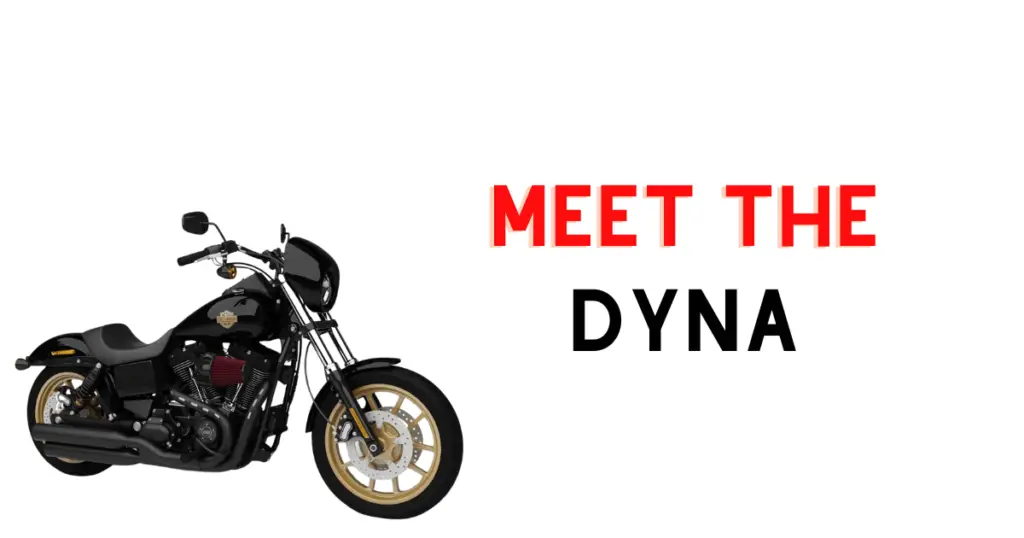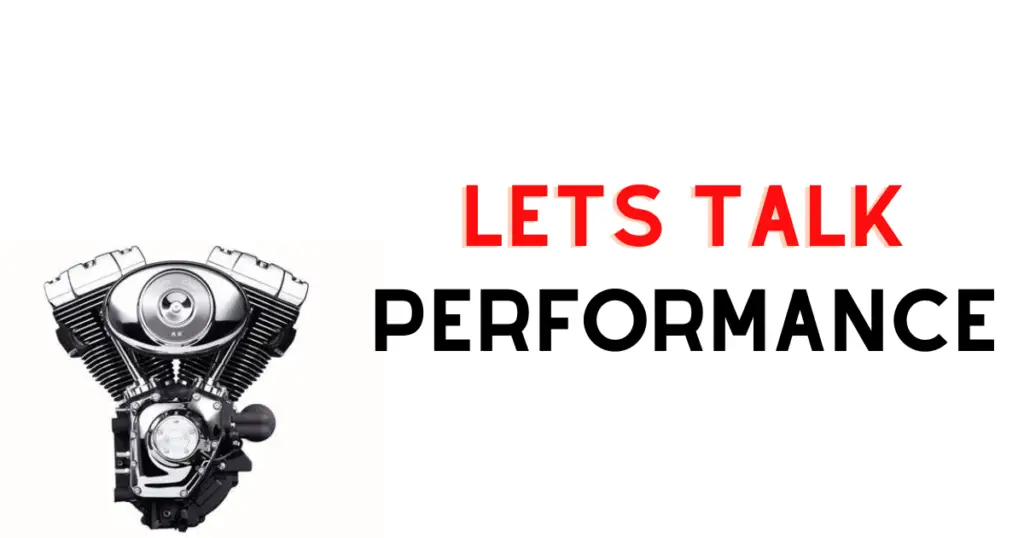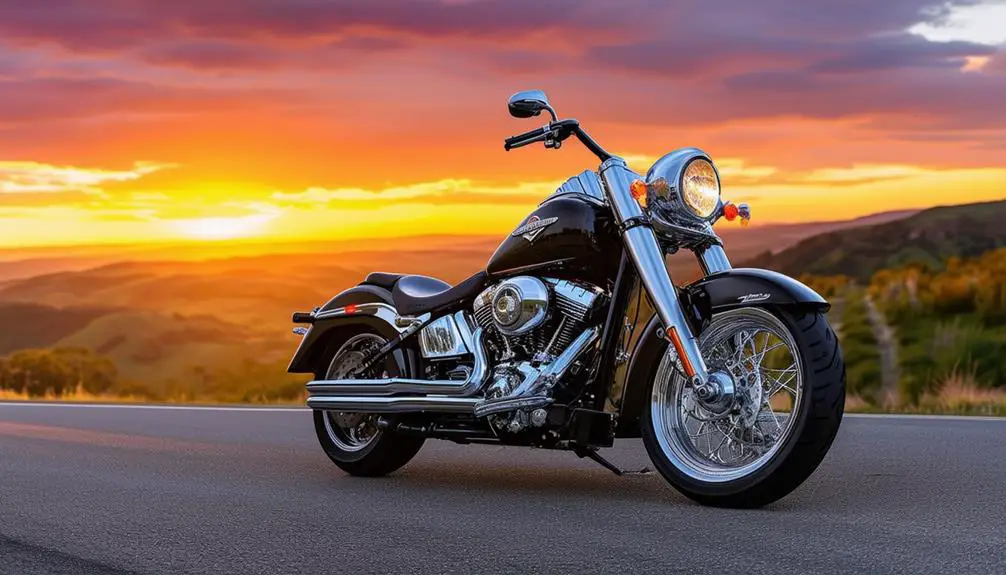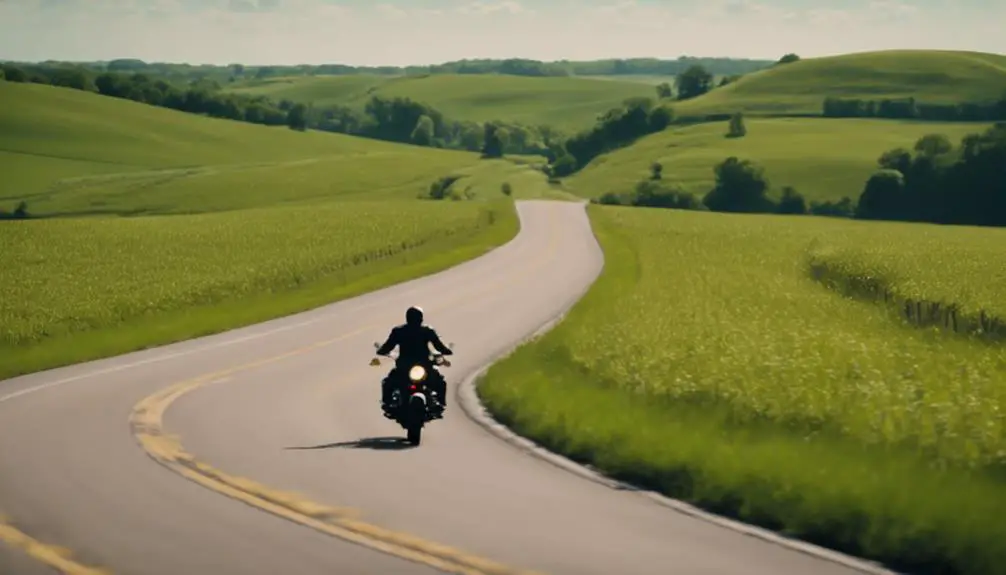Navigating the world of Harley-Davidson Dyna motorcycles can be as thrilling as riding one. If you’re passionate about performance-oriented design and classic styling, you’ll find the Dyna series sitting comfortably between the larger touring bikes and the nimble Sportsters in the Harley lineup. The Dyna models have earned a reputation that’s as diverse as the riders who love them, with certain years standing out for their excellence and others for their challenges.
You might be aware that within the motorcycle community, debates often arise over which years signify the cream of the crop and which are remembered less fondly. It’s important to know what to look for, whether you’re seeking to buy your first bike or add another to your collection. With the Dyna’s inception in the early 1990s and its evolution until its retirement in 2017, there’s plenty to explore. So, if you’re considering a Harley Dyna, being informed about the best and worst years can save you time and ensure you make a choice that keeps you riding in satisfaction. Let’s keep rolling then, shall we?
Related read: Harley Dyna Years: A Comprehensive Timeline and Overview
Introduction to the Dyna Series from Harley Davidson

The Harley-Davidson Dyna series, with its rich heritage and variety of models, represents a blend of classic and modern American motorcycle craftsmanship. As you explore this series, you’ll discover the progression of design and performance that has cemented its legacy in motorcycle history.
History and Evolution
The Dyna line, introduced by Harley-Davidson in the mid-1970s, has consistently been at the forefront of motorcycle engineering. Initially shadowed by the FXR models, it wasn’t until 1991 that the Dyna platform as you know it today was established, built around the air-cooled, twin cam 103 engine. However, the last of the Dyna models rolled off the production line in 2017, as they were integrated into the more contemporary Softail series. Throughout its lifespan, the Dyna was recognized for its customizability, performance, and the raw, authentic ride it offered, truly embodying the spirit of the American motorcycle brand.
Key Models
The Dyna series included several key models known for their distinctive characteristics and enduring appeal:
- Dyna Wide Glide (FXDWG): Featured a longer rake and was the choice for a classic chopper look.
- Dyna Super Glide (FXD): The baseline model, renowned for its simplicity and versatility.
- Dyna Low Rider (FXDL): Designed with a lower seat height, it provided a more accessible riding experience.
- Dyna Street Bob (FXDB): Brought a minimalistic style with modern performance.
- Dyna Fat Bob (FXDF): Stood out with aggressive styling and a wider stance.
Each model offered a unique riding experience, appealing to various tastes within the motorcycle community. Collectively, these bikes contributed to the enduring legacy of the Dyna series, influencing future Harley-Davidson designs, including the Sportster and Touring models.
Read later: Round ‘Em Up: What Year Harleys To Avoid? (Full Overview)
A Look Into The Dyna’s Performance and Engineering

When exploring the Dyna series, you’ll notice the standout performance and engineering feats that have shaped its legacy. Let’s dive into the specifics of what makes these bikes a dynamic force on the road.
Engine Design and Power
The heart of the Dyna’s appeal lies in its engine performance. With a history that includes both Evo engines and Twin Cam engines, Dyna models have consistently provided a robust power output. The earlier models equipped with Evo engines were praised for improved reliability and a solid foundation of power. As the series progressed, the Twin Cam engines took the stage, offering more increased power and a refined camshaft design to amplify your ride.
Related read: 7 Harley Twin Cam Years to Avoid (+ Their Problems, and Why)
Handling and Riding Experience
You will appreciate the handling merits of the Dyna series. Its design strikes a balance between a substantial, road-hugging frame and enough agility for a spirited, responsive ride. The riding experience is uniquely Harley—strong and smooth—allowing you to feel confident on both highways and winding back roads.
Suspension and Braking Systems
The Dyna’s suspension system is engineered to provide a comfortable ride without sacrificing the feel of the road. Throughout the years, enhancements in the suspension systems have allowed riders to tackle longer distances with ease. When it comes to braking, the Dyna models are equipped with systems designed for consistent performance, bringing together safety and reliability, so the ride is as enjoyable as it is secure.
Reliability and Maintenance Overview
When considering a Harley-Davidson Dyna, your prime concern likely centers around reliability and the nuances of keeping it well-maintained. This section delves into typical issues you might encounter and provides handy tips to ensure your ride is both enjoyable and dependable.
Common Issues and Recalls
Engine Problems: You should be aware of potential engine concerns, particularly with the cam chain tensioners, which may need inspection or replacement to prevent damage to your engine and ensure a smooth ride.
Oil Leaks: Another issue that Dyna models have experienced is oil leaks. Regular checks can help identify this problem early on.
Recalls: It’s important to stay informed about any recalls that may affect your bike’s performance and reliability. Manufacturers issue recalls to address safety and technical issues, so prompt attention to these is crucial in maintaining your bike’s longevity.
Related read: Harley Oil Breather Problems: Quick Tips, Tricks & More
Maintenance Tips
Routine Checks: Regular maintenance should include checks on spark plugs and oil levels to avoid unnecessary repair costs and to keep your bike running smoothly.
- Spark Plugs: Replace them as part of your routine maintenance to ensure engine efficiency and reliability.
- Oil Levels: Checking and replacing oil as needed helps to prevent engine problems and maintain engine quality.
Service Schedule: Consistently follow your bike’s service schedule to address any wear and tear proactively. Maintenance quality directly correlates to reliability, and adhering to a service schedule can extend the lifespan of your Dyna.
Remember, keeping on top of these aspects can greatly contribute to a reliably performing motorcycle ensuring that every ride is as smooth as expected from a Harley-Davidson Dyna.
A Peek Into The Best and Worst Dyna Years
When venturing into the world of Harley-Davidson Dyna models, it’s crucial to be aware of which years were remarkable and which were less reliable. Let’s break down the best and worst years of the Dyna so you can make an informed decision.
Identifying the Gems
- 1995-2009 Harley-Davidson Dyna Glide: This model is a standout with its 1584cc Twin Cam 96 engine, offering both reliability and a satisfying exhaust note.
- Best Years:
- Late 1990s: Notable for their smooth performance and solid build.
- 2002: Specific acclaim for minimal mechanical issues, making it a safe bet for potential owners.
- Best Years:
Years Prone to Problems
- Worst Dyna Years:
- Early 2000s Models: Some were affected by high crank runout, which can lead to mechanical failures if not properly addressed.
- Mechanical Failures: While mechanical issues can occur, they’re more prevalent in certain years, making regular maintenance a priority for older models.
By looking out for well-maintained bikes in the notable years, and steering clear from models with a history of mechanical complications, you can enjoy what the Dyna has to offer, whether you choose a Super Glide, Street Bob, or another model. It is important to consider models like the Road King, Electra Glide, Street Glide, or Road Glide as well, for a broader understanding of what works best for you. Remember, no matter the year, a well-cared-for Dyna can be a gem of a motorcycle.
Modifications and Customization Options for The Dyna
When you dive into the world of Harley-Davidson Dynas, the potential for modifications and customization is virtually limitless. Your ability to tailor the bike to your riding style and aesthetic preferences sets the stage for a truly personalized experience.
Popular Upgrades
Engine Tuning: You might start by tweaking your Dyna for better performance. Engine tuning can optimize your bike’s power and efficiency, leading to a more exhilarating ride. Upgrading to a high-performance exhaust system not only enhances the sound but can also improve horsepower.
Suspension Enhancements: To combat the infamous ‘death wobble,’ consider upgrading your suspension. This can vastly improve your ride quality and handling, especially on models like the Low Rider or the Fat Bob, which are popular for their customizability and robust features.
- Forks: Upgraded front forks provide better stability and control.
- Rear Shocks: Quality rear shocks are essential for a smoother ride and cornering.
Aftermarket Improvements
Custom Seats and Handlebars: Aftermarket seats and handlebars not only improve comfort but also give your Dyna a unique look. You can choose from a wide range of styles to fit your body type and riding preference.
- Seats: Options include styles that offer more support and ergonomic designs for long rides.
- Handlebars: Taller bars or those with a different reach can significantly alter your riding posture.
Wheels and Tires: Upgrading to aftermarket wheels and better-quality tires can enhance your Dyna’s performance and safety. Choosing the right tire for your riding conditions makes a noticeable difference.
- Tubeless Tires: These can provide better puncture resistance and are easier to repair.
- Performance Wheels: Lighter wheels can improve acceleration and handling.
By embracing these modifications and customizations, your Dyna becomes not just a bike, but an extension of your riding persona, tailored exactly to your specifications and style. With each change, you’ll feel more connected to your bike and the road ahead.
Aesthetics and Collectibility
When considering the Harley-Davidson Dyna series, your attention might often center on its distinctive aesthetics and collectibility. The vintage lines and robust presence of these bikes resonate with your passion for classic styling.
Classic Styling and Vintage Appeal
The Dyna models are a tangible expression of nostalgia mixed with performance. You can see this in the FXR models, which are often celebrated for their classic frame and aesthetics. Your appreciation for the Dyna’s vintage appeal is likely shared among collectors, who prize the series for its reverence for traditional Harley-Davidson design values. As you focus on aesthetics, consider how the Dyna models encapsulate the essence of motorcycle heritage, something that never goes unnoticed in the eyes of enthusiasts. Riding on a Dyna, with its unmistakable silhouette, you’re not only enjoying a piece of history but also contributing to its story as it continues to unfold on the open road.
Dyna Purchasing Advice
When you’re in the market for a Harley-Davidson Dyna, it’s important to equip yourself with information that will guide you to the best decision for your needs.
What Potential Buyers Should Know
As a potential buyer, you have to set clear expectations about what you desire in a motorcycle. Harley-Dylan Dynas, with their powerful engines and classic design, can be a thrilling choice, but knowing which models to focus on or avoid is key to your satisfaction.
- Comparative Analysis: Compare different Dyna models and years; some are renowned for their dependability and performance, while others may have noted issues.
Year Range Common Issues Notes 1999-2002 Camshaft chain tensioner failure Higher maintenance 2003-2006 Cost-cutting measures affecting quality Exercise caution when purchasing - Performance and Reliability: Research which years had exceptional performance or reliability issues to avoid unexpected costs or dissatisfaction.
- Resale Value: Keep in mind that certain years and models hold their value better, which might be important if you plan to sell the bike in the future.
Remember to inspect the specific bike and, if possible, get a seasoned mechanic to give it a once-over. The Dyna you choose should meet your expectations in performance, reliability, and comfort while also fitting into your budget.
Comparative Analysis with Other Harley Models
In your journey as a bike enthusiast, understanding how different Harley models stack up against each other can help you make an informed decision. The Dyna series, renowned for its robust performance, often draws comparison to the Sportster and Softail lines due to their unique attributes and riding styles.
Dyna vs. Sportster
When you’re looking at the Dyna models, you’re encountering a machine that sits at the ideal intersection of power and agility within the Harley family. Compared to the Sportster, the Dyna typically features a larger engine, such as the 103 cubic inch (1690cc) powerhouse, which provides more torque and enables higher top speeds. This makes the Dyna models preferable if you crave highway thrills or spirited riding sessions.
- Engine Size: Dyna’s 103 cubic inch vs. Sportster’s 883cc or 1200cc
- Performance: Dyna wins on power and speed
Nonetheless, don’t discount the Sportster. Its lighter frame and the option of smaller engines, like the 883cc or 1200cc, offer you an enjoyable and nimble riding experience, especially in urban settings or during shorter rides. The Sportster’s manageability is a bonus for newer riders or those who prefer a more relaxed ride.
- Riding Style: Sportster excels in urban agility
- Rider Experience: Better for beginners or laid-back cruises
Dyna vs. Softail
Now, when you pit the Dyna against the Softail series, you’re comparing two distinct riding experiences. The Dyna has been historically known for its exposed rear shock absorbers, contributing to a traditional, raw motorcycle aesthetic and a riding experience that some purists prefer.
- Suspension: Dyna’s classic exposed shocks vs. Softail’s hidden shocks
- Aesthetics: Dyna offers a more traditional Harley look
On the flip side, the Softail series, with its hidden rear suspension system, emulates the appearance of a rigid-frame motorcycle while offering the comfort of modern suspension technology. You might find the Softail models apt for longer rides thanks to this design.
- Comfort: Softail provides a smoother ride over long distances
- Style: Softail mimics a rigid frame for a clean look
Each Harley series caters to different preferences, whether it’s the raw and responsive feel of the Dyna, the urban maneuverability of the Sportster, or the cruising comfort of the Softail. Your choice should align with what you value most in your riding adventures.
Cultural Impact and Community
Harley-Davidson’s Dyna series has a significant cultural footprint in the motorcycle world. Your connection to the community around these bikes is rooted in a shared appreciation for their unique blend of performance and style.
Enthusiasts and Biker Culture
The Dyna is celebrated within biking communities for its robust performance and versatility. You’ll find that enthusiasts often gather at events and rallies, signifying a strong sense of camaraderie. Your riding experience is enhanced by this culture that values not just the mechanics but also the legacy of the Dyna series.
- Community Events: Ride-outs and meet-ups are common, where your stories and tips are exchanged, enriching the ownership experience.
- Customization: A highlight for you, as a Dyna owner, may be customizing your bike. It’s a tradition that bonds bikers, showcasing personal style and mechanical prowess.
- Heritage and Continuity: You’ll be part of a legacy that dates back to the original introduction of the Dyna models, with a community that respects both the history and the evolution of these bikes.
Remember, your ride on a Dyna is more than just transportation; it’s an invitation to a community where each member celebrates the open road and the bikes that carve the path.
Technical Specifications of The Dyna
When examining the technical side of Harley-Davidson Dyna models, your focus is often drawn to two major components: the engine and the frame. These areas highlight the machine’s heart and skeleton, both crucial for understanding your ride’s performance.
Engine and Gearbox Details
Engine:
- Type: Twin Cam 88 Engine
- Configuration: V-twin, air-cooled
- Displacement: 88 cubic inches (1,450 cc)
- Fuel System: Carbureted or Electronic Fuel Injection (EFI), depending on model year
Gearbox:
- Type: 5-speed manual
- Drive: Belt drive system
Frame and Bodywork Specifics
Frame Design:
- Material: Steel
- Type: Double cradle, which contributes to rigidity and improved handling
Bodywork:
- Materials: Use of both metal and composite materials for durability and style
- Design features vary between models, with common characteristics being the classic Harley-Davidson cruiser aesthetic.
Remember, these specifications are a starting point. Your particular Dyna model may have unique characteristics and you should consult the specific manual or resources for your motorcycle year and model for exact details.
Frequently Asked Questions
In your journey with Harley-Davidson Dyna models, you might have a few questions on what to look out for, including model specifics and typical concerns. Below you’ll find answers to some frequently asked questions that could assist you in making informed decisions about your motorcycle.
Which year models of Harley-Davidson Dyna should be avoided?
It is commonly suggested to avoid certain year models which might have had issues in the past. For example, some of the earlier Dyna models from the mid-90s have been noted to have more concerns, so you may want to proceed with caution when looking at bikes from those years.
What is considered high mileage for a Harley-Dyna motorcycle?
A Harley-Dyna motorcycle can usually still perform well even with higher mileage. Generally, if a Dyna has over 40,000 miles, you might consider it high mileage, but this also depends on how well the motorcycle was maintained.
Between Dyna and Softail models, which one is considered superior?
This is subjective as both have their merits. The Dyna is known for its traditional frame and rubber-mounted engine, popular among enthusiasts for customization. Softails, on the other hand, offer a smoother ride with a hidden rear suspension.
What makes the 2006 Harley-Davidson Dyna unique?
The 2006 Harley-Davidson Dyna is unique due to its redesigned frame and improved performance features that year. This was the first year for the six-speed transmission and the introduction of the fuel injection system across the Dyna line-up.
Are there any common issues associated with certain Dyna year models?
Yes, certain issues such as transmission or clutch problems have been reported in some year models. For instance, some 2004 Dyna models had clutch basket issues, and others had complaints about transmission noise.
How does the performance of Dyna models compare across different years?
Performance can vary across different years as a result of design changes and technological improvements. Post-2006 models generally saw performance upgrades with the new six-speed transmission and fuel injection systems, enhancing the ride experience.







Leave a Reply
You must be logged in to post a comment.